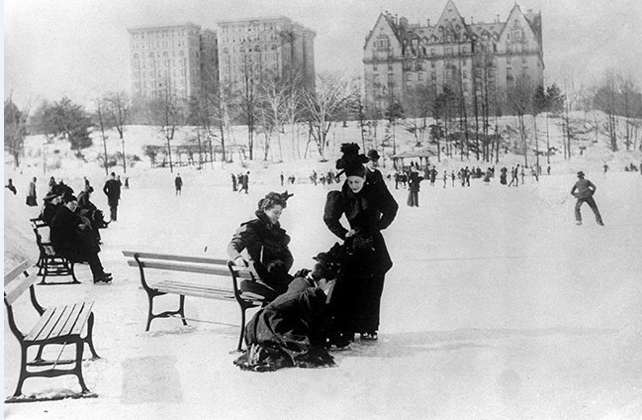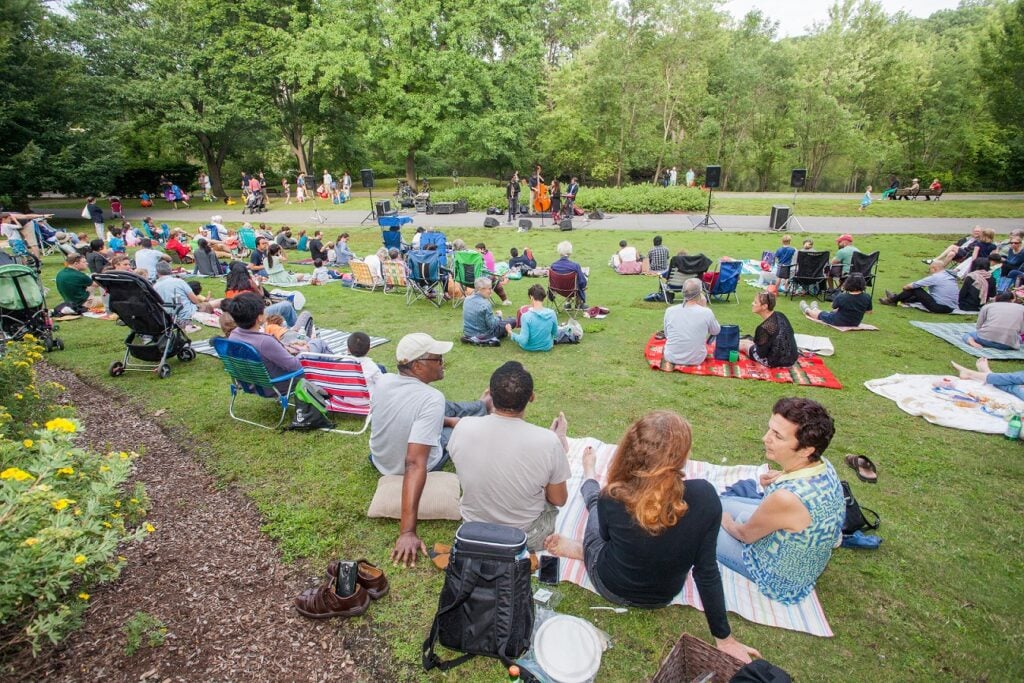While seeking inspiration for a commission from violinist Nicholas DiEugenio and pianist Mimi Solomon, it occurred to me that my entire life has been spent in close proximity to parks designed by Frederick Law Olmsted. This isn’t particularly remarkable given how many iconic public spaces he left behind, but it nonetheless struck me as noteworthy, if not significant and personal. With this in my mind, I wrote Olmsted for violin and piano in 2017 while living a short walk from Jamaica Pond. Originally from New Jersey, my wife and I arrived in Jamaica Plain by way of Brooklyn and spent five years living near the pond, which became the backdrop for many significant moments in our life, including the early years of our two children. My relationship to the pond and its form and function within the community got me thinking about the subtle yet powerful ways landscape design permeates our life, creating structures that shape and shade how events both profound and routine unfold in our lives.
Upon reflection, I recounted the various Olmsted-designed environs that have marked my life: Parts of the campus of the Lawrenceville School in New Jersey where I attended high school (Olmsted designed an area they call “The Circle”); Prospect Park from my time living in Brooklyn; Jamaica Pond and World’s End from my time living in Boston; and finally Central Park, where my in-laws live and where we have spent much time with family and friends now that I live just outside New York City and teach at NYU, Steinhardt.
All of this came to bear in my composition, Olmsted. Unfolding like short vignettes, each movement of my piece refers to a different park, as a kind of a collection of fleeting moments from the past. The bright and ebullient first movement, “Jamaica Pond,” as part of the Emerald Necklace, functions as a link in the chain of seven parks gracefully strung through several Boston neighborhoods. The slow, lyrical second movement, “The Ramble,” is a wooded area of Central Park, full of winding, semi-obscured paths, specifically designed for getting lost, deliberately obscuring the surrounding city. “Long Meadow,” the playful third movement, is part of Prospect Park in Brooklyn, a vast lawn where kids play and families picnic, a popular spot for winter sledding and summer games. Finally, “World’s End” is an unfinished project just south of Boston. Preserved as it was left over a hundred years ago, the park is quiet and beautiful, the footprints of a grand design clearly visible beneath the empty meadows and elegant carriage paths. There is a special poetry to these spaces with their winding paths, carefully designed vistas, and perfectly calibrated balance of natural and man-made landscapes. It’s no surprise that in spite of a lifetime of experience – from the mundane to the transformative – they still surprise and delight.
For more information about the composition, visit here.







